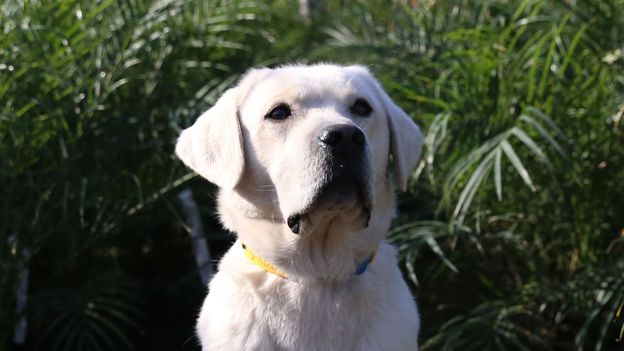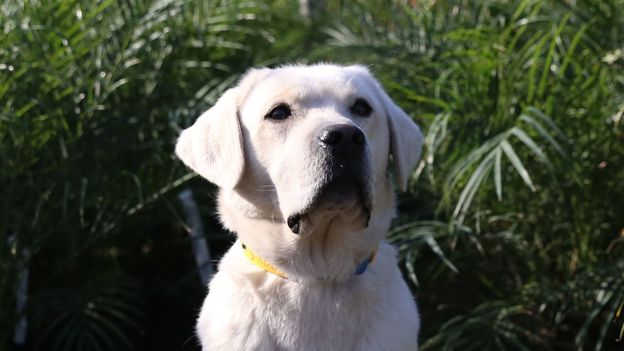

However, training a new dog is not easy and can take some time. According to Serena Donnini, a dog trainer for ENCI and the coordinator of the Xylella Detection Dogs experimental programme, there are some dog breeds, such as the springer spaniel, German shepherd, cocker spaniel, and Labrador, that, thanks to their larger nose and chest space, are more likely to become good super smellers and work longer shifts in a self-directed way, often pursuing a scent for hours. But that’s not enough, Donnini says, because a dog’s personality is important too: to pass all the exams to become a detection dogs, the animals must love to play and eat.
“This is important in order to develop a reward system,” Donnini says. The more a dog loves to catch a ball, and the more they become obsessed with it, the more likely they’ll look for it. “Until we have something that the dog wants so strongly that he would almost be willing to kill to get it, we can’t move forward to train him.”
A common object that Donnini and her colleagues often work with is a hollow rubber toy. After letting the dog initially play with it, trainers start hiding it to work on the dog’s searching skills. Every time the dogs find the rubber, they receive a food reward.
“It must think, ‘working here is great because I found my toy’,” Donnini says. To the dogs, the rubber has a very specific odour, so the more the training advances, the more the trainer breaks the rubber into smaller pieces until they become the size of a lentil. The smaller the rubber fragment, the more the dog concentrates on finding it and speeds up its sniffing frequency. Once the dog is taught how to indicate it has found the toy by freezing, barking or sitting, trainers insert the target smell.
According to Donnini, there are different ways to do this, but there are two most common methods. The first is pairing – putting together target smell and toy, rewarding the dog when they find them, and slowly removing the rubber of the toy. The other is contrasting – here, no toy is hidden, but as the dog urgently looks for it, when it passes by the target odour, it receives a reward. The dog soon learns to signal when it recognises the new smell, receiving a reward.
Therefore, Donnini says it’s crucial to train the dogs with the right scents, and this is where the scientists of the National Research Council play a fundamental role. To save trees from Xylella, that scent is the odour of an infected plant. Like humans, when plants get infected, their metabolism and scent change.